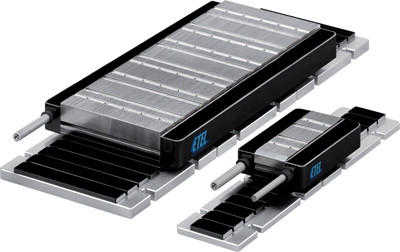
To meet the need of linear measurement machine applications where high force is required, Heidenhain offers ETEL ironcore linear motors called the LMS and LMG series.
The patented design of ETEL's motors minimize the amount of force ripple that is typical of ironcore motors while maintaining the high-force density that other anti-cogging designs sacrifice. Both models complement each other since the LMG is ideal for high dynamic applications where a greater peak-to-continuous-force ratio is desired, while the LMS is ideal for high-duty cycle applications with a more continuous force. Both motors share the same footprint, peak force, mounting interface, cable outputs, and magnetic track making an exchange between the two as simple as replacing the carriage if ever necessary.
All of ETEL's ironcore linear motors only require a single magnetic track and are compliant up to 600V. They are able to reach speeds of up to 10 m/s, an acceleration of 20g, and reach a peak force of up to 3650 N. Both models come in a variety of sizes that differ in length and width to meet the application requirement.
The LMG/LMS linear motor series, along with all other motors provided by ETEL, are designed specifically for direct drive applications, which reportedly include, but are not limited to, the following advantages over transmission-based devices:
• Fewer parts requiring lower overall costs
• Stable performance all along machine lifetime due to zero maintenance required on the motors
• No backlash, allowing for better accuracy and repeatability
• Smooth, precise, and efficient motions
• Compact design
Contact Details
Related Glossary Terms
- backlash
backlash
Reaction in dynamic motion systems where potential energy that was created while the object was in motion is released when the object stops. Release of this potential energy or inertia causes the device to quickly snap backward relative to the last direction of motion. Backlash can cause a system’s final resting position to be different from what was intended and from where the control system intended to stop the device.
- linear motor
linear motor
Functionally the same as a rotary motor in a machine tool, a linear motor can be thought of as a standard permanent-magnet, rotary-style motor slit axially to the center and then peeled back and laid flat. The major advantage of using a linear motor to drive the axis motion is that it eliminates the inefficiency and mechanical variance caused by the ballscrew assembly system used in most CNC machines.







